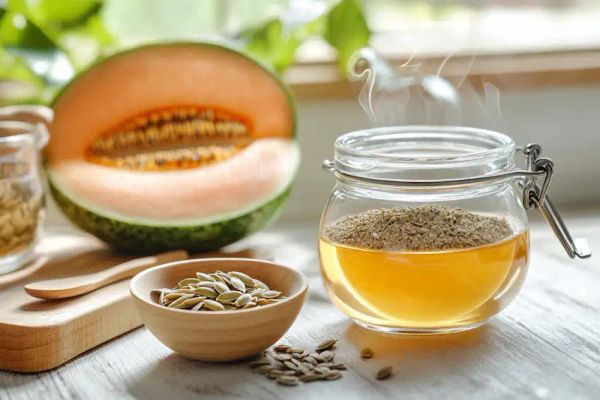Rosemary is a versatile herb that has gained popularity for its culinary uses. However, this fragrant evergreen herb offers a lot more than just flavor. In fact, it has a wide range of health benefits that can improve your overall well-being. From boosting cognitive function to enhancing digestion, rosemary is a remarkable herb that can transform your health.
1. Enhanced Cognitive Health and Memory

Rosemary has long been associated with memory enhancement. It contains compounds that improve memory and cognitive function. Whether you’re a student looking to boost your focus or an older adult concerned about cognitive decline, rosemary can be a valuable tool. Additionally, the antioxidants in rosemary protect the brain from damage, reducing the risk of neurodegenerative diseases like Alzheimer’s and dementia.
2. Powerful Antioxidant and Anti-Inflammatory Effects
Rosemary is packed with antioxidants and anti-inflammatory compounds. These antioxidants fight free radicals in the body, reducing oxidative stress and the risk of chronic diseases like cancer and heart disease. The anti-inflammatory properties of rosemary help reduce inflammation, which is a major contributor to various health issues including arthritis and cardiovascular diseases.
3. Improved Digestive Health and Gastrointestinal Relief

Rosemary has traditionally been used to support digestive health. It stimulates digestion and helps reduce symptoms like bloating and indigestion. Rosemary also has antimicrobial properties that maintain a healthy balance of gut bacteria and prevent gastrointestinal issues. In addition, drinking rosemary tea can provide relief from indigestion and heartburn, soothing the digestive tract and reducing discomfort.
4. Strengthened Immune System
Rosemary has the ability to enhance immune function. The antioxidants in rosemary strengthen the immune system by neutralizing free radicals and reducing oxidative stress. This is crucial for fighting off infections and staying healthy. Rosemary also contains natural antibacterial and antiviral compounds, providing extra protection against common illnesses like colds and flu.
5. Respiratory Health Support
Rosemary’s benefits extend to the respiratory system. Its anti-inflammatory and antioxidant properties can help alleviate respiratory problems such as asthma, bronchitis, and allergies. Inhaling rosemary essential oil or drinking rosemary tea can open up the airways, reduce congestion, and ease breathing. Rosemary acts as an expectorant, helping to loosen phlegm and mucus, making it easier to expel.
6. Hair and Scalp Health
Rosemary is a popular ingredient in natural hair care products due to its benefits for hair and scalp health. It stimulates hair growth by promoting circulation to the scalp. It also reduces dandruff and soothes an irritated scalp due to its antimicrobial and anti-inflammatory properties. Additionally, rosemary strengthens the hair shaft, reducing breakage and split ends.
7. Cardiovascular Health Support
Rosemary supports heart health in several ways. It improves blood circulation, which is vital for cardiovascular health. Rosemary may also help lower bad cholesterol levels while increasing good cholesterol, contributing to a healthier heart. The anti-inflammatory and antioxidant properties of rosemary protect the heart from damage caused by oxidative stress and inflammation, reducing the risk of heart disease and stroke.
8. Mental Health and Stress Relief
Rosemary has calming effects on the mind. It can reduce stress and anxiety by lowering cortisol levels, the hormone associated with stress. Inhaling rosemary essential oil or drinking rosemary tea can promote relaxation and improve overall mental well-being. The uplifting scent of rosemary can also improve mood and reduce symptoms of depression. Additionally, rosemary’s calming properties can help improve sleep quality for those struggling with insomnia or restless sleep.
9. Improved Skin Health and Anti-Aging
Rosemary benefits the skin by fighting aging signs such as wrinkles, fine lines, and sagging skin. Its antioxidants neutralize free radicals that cause these aging signs. Rosemary also treats skin conditions like acne, eczema, and dermatitis due to its anti-inflammatory and antimicrobial properties. Furthermore, rosemary oil improves skin hydration and elasticity, keeping the skin soft and supple.
10. Weight Management Support
Rosemary can play a role in weight management. It stimulates metabolism, helping the body burn calories more efficiently. Rosemary also aids digestion, improves nutrient absorption, and reduces appetite. These benefits make it a valuable herb for those looking to manage their weight.
Whether fresh, dried, or as an essential oil, there are numerous ways to incorporate rosemary into your daily routine. Sprinkle it in your meals, brew it into tea, or use it in aromatherapy. You can even apply rosemary oil topically or add it to your bath for a relaxing soak. Embrace the power of rosemary and experience its transformative effects on your holistic health.



















